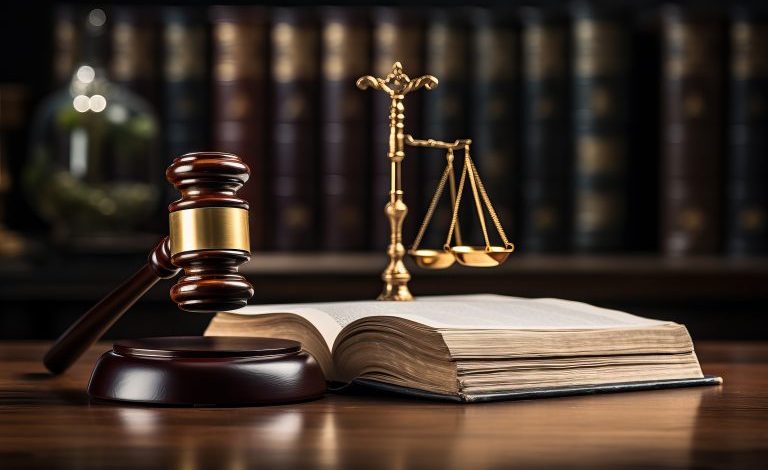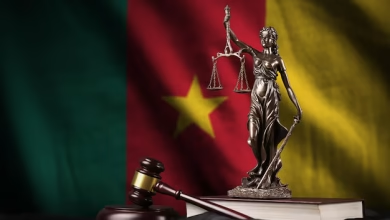Presenting Tough Facts: A Strategic Guide for African Lawyers
By Bryan Mens - Editor, Legal Africa

In legal practice, the glitches, the ugly truths, the bad facts they all happen. No matter how impeccable the brief, how solid the witness list, some clients come with baggage: facts that a court, tribunal or dispute-resolution forum will view unfavourably.
The question becomes: What now? How do you honestly and robustly represent a client when the facts are against them without surrendering your credibility, your client’s dignity or the pursuit of justice?
That is exactly the terrain explored by Bryan A. Garner in his recent piece for the ABA Journal, and it offers rich lessons for African legal practitioners. Below I draw out the key take-aways, adapt them to our context, and propose a practical roadmap for lawyers in Africa.
Why This Matters in Africa
In many African jurisdictions, issues of access to justice, procedural fairness and institutional trust remain central. When a lawyer appears before a tribunal and the client carries deeply unfavourable facts whether past misconduct, regulatory non-compliance, or reputation damage the lawyer’s handling of those facts often determines whether the client is heard as a full human being, or dismissed as a lost cause.
Moreover, our justice systems (formal and informal) often carry cultural, reputational and social weight beyond the strictly legal. A “bad fact” can ripple: it may tarnish communities, invite social sanction, or undermine the lawyer’s role as advocate and counsellor. The ability to present these facts in their best possible light therefore isn’t just advocacy craft it’s justice-craft.
Main Principles from Garner’s Framework
From Garner’s article, we can distil several core principles. I summarise them here in plain terms, then follow with how they apply in African jurisdictions.
-
Avoid repeating the pejorative label
Garner’s example: when the client is called a “liar,” don’t say “my client is not a liar.” Instead say, “my client has been candid and honest.” The shift is subtle but powerful.In other words: don’t re-echo the negative term; reframe it positively.
-
Reframe the narrative, rather than deny the fact
When an adverse fact is incontrovertible, the task is to place it, explain it and contextualise it not to pretend it doesn’t exist. -
Use language that emphasises what the client is, rather than what they are not
Garner uses the example of “a devoted wife who truly loved her husband” instead of “not a gold-digger.”The idea: describing a positive identity invites the decision-maker to view the client less through the adverse fact and more through a fuller humanity.
-
Be credible and strategic, not extravagant
Garner warns against overblown arguments that undermine credibility (for example the lawyer of Roman Polanski who compared fleeing prosecution to fleeing the Germans). The damage was unnecessary and rhetorical excess undermined the case. -
Remember that an argument which you don’t believe may still persuade a judge but you must still respect the process
Garner quotes Samuel Johnson: “You are to state facts fairly. … An argument which does not convince yourself may convince the judge.”
Applying the Principles in African Practice
How do these principles translate to the realities of African legal systems? Here are several applied considerations:
-
Know your audience
Whether you are appearing before a formal court, a customary tribunal or an ADR forum, understand what values and language resonate. Building a narrative doesn’t mean ignoring cultural, social or institutional dynamics. -
Map the “bad fact” in full factual context
Before crafting your framing, invest in a fact-audit: How serious is the adverse fact? What documents or testimony support it? What mitigation or explanation exists? What precedents in your jurisdiction show how such facts have been handled? -
Prepare the mitigating story and why it matters
Example: A corporate client committed an environmental breach years ago. The adverse fact: breach of regulation and damage to community trust. Framing it the right way: “At the time the client was unaware of the full impact; since then it has remedied all harms, engaged with the community and adopted rigorous compliance. Today it stands as a model of responsible business transformation.” This reframing doesn’t deny the incident; it locates it and shows evolution. -
Order your evidence strategically
Don’t start with the bad fact. Instead lead with strong, favourable facts; reserve the bad one for the middle; follow with the mitigation and transformation. It’s the “soft-hard-soft” model. Garner’s article implicitly supports this ordering by emphasising strategic presentation of argument. -
Language matters choose identity rather than labels
If the client is accused of negligence, don’t repeatedly say “my client was not negligent.” Rather say: “My client has always acted with conscientious care, mindful of community standards…” This emphasises affirmation over negation. -
Manage client expectations
Especially where the bad facts are deeply damaging, you must be honest with your client about realistic outcomes, options and risks. Garner’s article reminds us that credibility is crucial — weaving persuasive narratives must not cross into misrepresentation. -
Don’t forget procedural opportunities and risk-management
Assess whether the bad fact is admissible, whether its weight is challenged, whether you can raise objections that limit its impact, or possibly negotiate away or settle before trial. Garner’s framework suggests that argument must respect rules and not rely purely on rhetorical spin.
A Six-Step Roadmap for Lawyers
Below is a practical step-by-step guide you can adapt:
Step 1: Fact-audit
List all relevant facts. Identify which ones are strong adverse facts. Understand their sources, strength, corroboration and implications.
Step 2: Narrative construction
Draft a story that frames the client’s identity, context and trajectory. Avoid repeating adversarial labels. Use language of affirmation.
Step 3: Evidence mapping
Link your narrative to evidence: favourable facts first, then the adverse fact, then mitigating facts. Consider ordering and emphasis.
Step 4: Procedural strategy
Ask: Can the adverse fact be challenged on admissibility or weight? Are there legal burdens, presumptions or standards you can leverage? Plan motions, objections or negotiations accordingly.
Step 5: Client briefing
Explain the strategy to the client in simple, straightforward terms. Ensure they understand the strengths and the limits. Prepare them for how the adverse fact will appear and how you will frame it.
Step 6: Presentation and closing
In your brief, in your oral argument, ensure your language is crisp, your narrative coherent, your mention of the adverse fact measured. Use a “soft-hard-soft” order: favourable → adverse → mitigation/positive. Close with the client’s positive identity or reform trajectory.
Why This Elevates Advocacy in Africa
By embracing this approach, African lawyers achieve more than tactical wins; they contribute to a deeper professionalism. They help ensure that clients who come with bad facts are not cast aside, but genuinely listened to, framed with dignity and advocated for with rigour. This approach aligns with the ideals of justice — not just because the client deserves representation, but because the justice system demands advocates who handle every truth, even the difficult ones, with integrity.
It also underscores that strong advocacy isn’t mere rhetoric it’s disciplined storytelling grounded in truth, respect and strategy. Garner’s insight is a clarion call: when the facts are tough, our craft must be tougher.
Conclusion
For lawyers across Africa, representing a client with adverse facts isn’t a defeat it’s a pivot point. The truth is unchangeable; how we present it, contextualise it and humanise it, makes all the difference. The moral and professional challenge is real.
By applying the principles outlined by Bryan A. Garner, and by adapting them thoughtfully to our jurisdictions, we can better serve clients, strengthen the credibility of our advocacy and contribute to a more just legal landscape in Africa.




